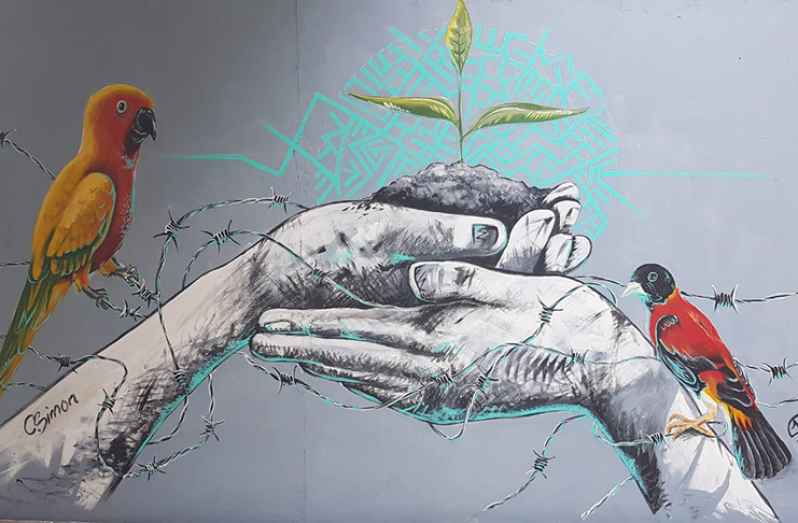I RECENTLY saw a Facebook post by artist Nigel Butler where he mentioned himself and others taking their art to the streets. The post included a time-lapse video of him and another young artist, Ransford Simon painting a mural. Since graduating from the E.R. Burrowes School of Art, Nigel has been making a name for himself by painting several murals at various learning institutions and social spaces. His work is aesthetically pleasing and thought-provoking. A few days after his initial post, Nigel shared an image of a project he completed with fellow artist Collin Simon. It was a mural entitled “The Good Fight,” located near the Courtyard Mall, Robb street, between Camp and Wellington Streets. It’s the beginning of street art in Guyana. I’m excited!
Street art gained prominence in the 1980s as an illegal protest in large cities in the United States and Paris. Hip hop culture made it popular;today, it is quite common. Street art is about social activism in public spaces. It provides context to history, politics, culture and at times serves as a means of self-expression for the artists. Street art includes murals, installations, stencilled images, and stickers. Street Art’s status as vandalism often outweighs its status as art. However, beyond our borders, many artists are finding more opportunities to create artworks where previously it was forbidden. They can now partner with organisations that offer outdoor public spaces in which street artists are permitted to execute works. This seems to be the approach of our local artists. Anyone willing to partner with them can contact them via their Facebook page, Art in our Heart.
Early street art emerged from graffiti. Graffiti is an illegal form of visual communication, involving the unauthorised marking of public spaces by an individual or group. The common image of graffiti is a stylistic symbol or phrase, spray-painted on a wall most commonly by a member of a street gang. However, not all graffiti is gang-related. Graffiti can be understood as antisocial behaviour performed to gain attention, fame, or as a form of thrill-seeking.
I thought it was important to mention this so that persons will be cognisant of the difference. These young artists have no intention of defacing our streets with their work. Rather, the intention is for us to think about issues that concern us. I hope Guyanese can get as excited as I am, to see where this venture will lead. I remember my visits to other countries and how fascinated I was by street art;to have it here would be quite refreshing.




.jpg)









